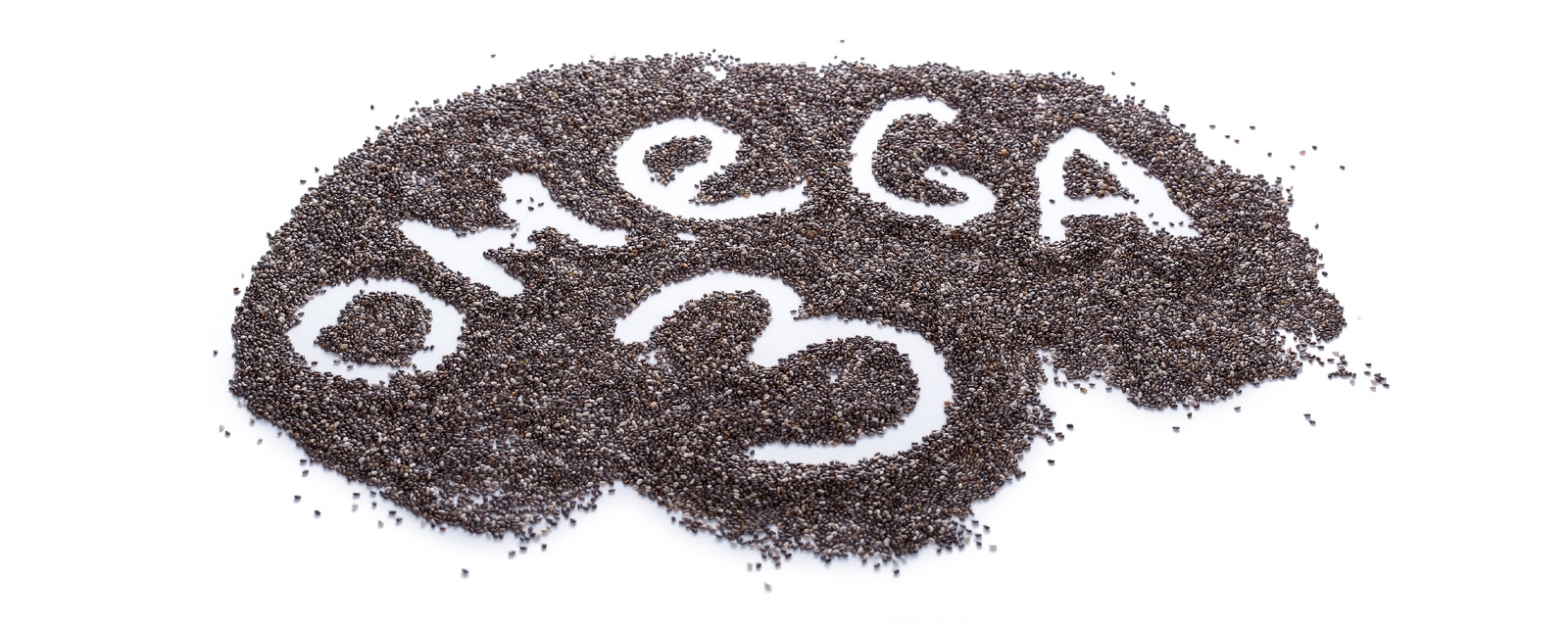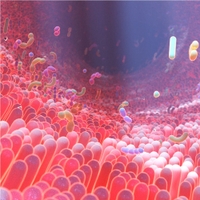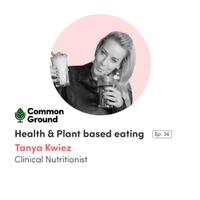
Omega-3 (n-3) fatty acids have been linked to healthy aging throughout life (1).
They are incorporated into the membrane lipid bilayer in virtually all body cells and affect membrane composition, cell signalling cascades, and gene expression, all of which play vital roles in brain development and function, cardiovascular health, and inflammatory response (2).
The three main n-3 fatty acids are alpha-linolenic acid (ALA), eicosapentaenoic acid (EPA).
Vegetarian and vegan sources of n-3 may be sourced from ALA, algae derived oils and genetically modified (GM) plants with varying DHA and EPA content.
The production and application of microbial oils as vegetarian sources of n-3 is expected to grow markedly (3).
The relationship between n-3 dietary intake, bioavailability and conversion is complex and influenced by many different factors such as genetics, smoking status, age, gender and consumption of omega-6 (n-6) rich food sources (e.g. linoleic acid (LA)) (4).
High dietary intakes of n-6 fatty acids can reduce n-3 metabolic conversion.
It is recommended that vegetarians and vegans aim for sufficient intake of ALA and limit LA intakes (4).
ALA is partially converted to EPA in humans (8–20%), while conversion rates of ALA to DHA are estimated at 0.5–9%.
Studies in women of reproductive age showed a 2.5-fold rate of conversion of ALA to EPA compared to healthy men (2).
In males it is estimated that only 0.5–4% of ALA is converted to DHA while in females the rates are thought to be as high as 9%. It is hypothesised that demand for DHA by the foetus during pregnancy may stimulate female physiology to more readily synthesise this fatty acid. More studies are needed to examine these differences in vegetarians and vegans (4).
Many of the ALA rich oils are abundant in LA, which may lead to difficulty in consuming sufficient ALA without also increasing the amount of LA in the diet, unless specific foods/supplements high in ALA are consumed such as flaxseeds, flaxseed/linseed oil, hemp seeds and chia seeds or oils (4).
ALA sources and marine derived algae - short overview from monographs
Hemp seed (Cannabis sativa) (5)
Hemp seeds and hulled seeds contain 2.6g of ALA in every 3 tablespoons (tbsp) (6).
Depending on the variety, hemp seed oil contains:
- 0 - 23.0% ALA
- 0 - 57.3% LA
- 0 - 19.9% oleic acid (OA)
- 6 - 4.4% gamma-linolenic (GLA)
- 2% stearidonic acid (SDA)
Hemp seed is traditionally used for its anti-inflammatory effects. In animals and humans, studies propose that consuming hemp seed oil increases levels of n-3 and n-6 in the blood.
Given the presence of n-6 and n-3 in hemp seed oil, it is of interest for reducing levels of plasma cholesterol. However, human research in children with hypercholesterolemia and in healthy adults, as well as most animal research, does not support the cholesterol-lowering effects of hemp seed oil.
A small clinical trial in obese adults suggests that taking hemp oil extract (60 mg daily) may produce small improvements in high density lipoprotein (HDL) cholesterol. After 6 weeks of treatment, HDL increased by approximately 3 mg/dL, compared with a decrease of approximately 2 mg/dL in the placebo group.
In vitro, some hemp seed peptides inhibited the enzyme HMG-CoA ![]() reductase and increased the uptake of low-density lipoprotein (LDL) cholesterol into cells by increasing expression of the LDL receptors.
reductase and increased the uptake of low-density lipoprotein (LDL) cholesterol into cells by increasing expression of the LDL receptors.
Chia seed (Salvia hispanica) (7)
Chia seeds contain 5g of ALA per 28g (6).
Chia seed contain a high concentration of n-3 and ALA.
They also contain a significant concentration of dietary fibre, protein, calcium, magnesium, iron, and antioxidants.
Salba is a selectively grown, white-coloured variety of chia which provides approximately 19% ALA.
Fatty acids within chia seeds appear to have anti-inflammatory and antioxidant potential.
Due to this fatty acid content and dietary fibre, there is interest in using them as a food source for reducing cardiovascular risk factors including diabetes, hypercholesterolemia, hypertension, and inflammation.
Preliminary clinical research shows that consuming bread containing Salba (Salba Nutritional Solutions) may reduce some cardiovascular risk factors such as systolic blood pressure and C-reactive protein levels; however, it does not appear to affect lipid levels.
In patients with high blood pressure, chia seeds appear to modestly lower blood pressure.
Perilla (Perilla frutescens) (8)
Perilla seed oil is high in ALA (up to 64% of fatty acids) and increases levels of ALA in the plasma. The seed oil also contains LA and OA.
In an animal model, ALA from perilla oil is metabolised to EPA, however it is not clear if this happens in humans.
Perilla leaf is traditionally used for allergies, asthma, and gastrointestinal issues, potentially due to its anti-inflammatory effects. In animal models and laboratory research, perilla seems to inhibit the production of inflammatory cytokines and the activity of cells such as macrophages and neutrophils.
English Walnut (Juglans regia) (9)
English walnut fruit (the "nut") contains high amounts of the polyunsaturated fatty acids (PUFA’s), LA and ALA.
Clinical research suggests English walnuts might improve endothelial function, which might be beneficial in preventing atherosclerosis.
In healthy men, eating 75 g of English walnuts daily appeared to improve sperm vitality, motility, and normal appearance. The improvements correlated with increases in essential fatty acids, especially ALA in the blood.
Microalgae oil – Algal oil (10)
Microalgal oils offer a direct plant-based bioequivalent source of n-3 to those found in fish oil, making them suitable for consumption by vegetarians and vegans. Commercial supplements have developed direct sources of EPA and DHA rich oil from microalgal sources (4).
Algal oil is derived from various types of preferentially cultured marine algae.
The algae are cultured under specific conditions in order to maximise levels of the fatty acid.
There is limited understanding of the nutritional variation across algal species, geographical regions, and seasons, all of which can substantially affect their dietary value.
Quantifying which fractions of algal foods are bioavailable to humans is an important issue requiring further research, as well as determining which factors influence the release of food constituents, ranging from food preparation to genetic differentiation in the gut microbiome. Other considerations to take into account are the effects of harvesting, storage, and food processing techniques that can dramatically influence the potential nutritive value of algal-derived foods (11).
Crypthecodinium cohnii and species of Schizochytrium are used for the production of DHA and a very small amount of EPA.
Cultivated Schizochytrium can contain up to 50% DHA or more of the oil.
Nitzschia laevis and Nannochloropsis oculata are used for the production of EPA.
Other species of microalgae, such as Dixioniella grisea and Isochrysis galbana, continue to be examined for their fatty acid nutritional value.
Nannochloropsis oculate oil is 25 - 40% EPA.
Commercial supplements providing fatty acids from algal oils generally dilute the oils in vegetable oils, such as high-oleic sunflower oil or olive oil.
The resulting supplements provide 7.7 -151.1 mg EPA/gram of oil or 237.8-423.5 mg of DHA/gram of oil.
In healthy individuals, algal oil enriched in EPA was found to reduce levels of very low-density lipoprotein (VLDL) cholesterol, which resulted in decreased total cholesterol. There was no effect on triglyceride or LDL cholesterol levels.
The fatty acids from algal oil are absorbed into the body and incorporated in plasma and cellular lipids. Taking algal oil containing EPA and no additional n-3 sources, increases levels of EPA and other n-3 in lipids in the plasma, within 2 hours.
A clinical study in adults with age related cognitive decline were provided DHA enriched algal oil containing 900mg daily for 24 weeks. Improvements in episodic memory and visuospatial learning were seen compared to controls. Working memory and executive function were not improved.
DHA-enriched algal oil is commonly included as a component of prenatal vitamins. Algal oil providing DHA 400-600 mg daily during pregnancy has been used with apparent safety in most clinical research.
The tolerable upper intake level of DHA during pregnancy or lactation has not been established. 200-300 mg DHA daily during pregnancy and lactation is recommended.
There is insufficient reliable information available about the safety of EPA -enriched algal oils during pregnancy or lactation.
Algal oil sourced DHA alone does not appear to affect blooding clotting. When given with EPA from fish oil, doses over 3g per day may decrease blood coagulation and increase risk of bleeding.
Flaxseed oil (Linum usitatissimum) (12)
Flaxseeds contain 6.7g of ALA per tbsp (6).
Flaxseed oil one of the richest food sources of ALA (up to 55% of the fatty acid content). However, the fatty acid composition of flaxseed oil supplements varies leading to differences in ALA content as well as dosages.
ALA is converted into EPA and DHA, however conversion in humans is slow and inefficient.
Taking flaxseed oil 2.4-3.6 g daily significantly increases erythrocyte EPA and DHA levels. However, ALA from flaxseed oil does not necessarily have the same physiological effects as EPA and DHA. The amount of EPA made from ALA is not likely to be clinically significant. Conversion of ALA to DHA is even less. High dose or long-term consumption of modest amounts of dietary ALA does not duplicate the effects of preformed EPA+DHA.
Taking flaxseed oil 20 g daily, providing 10.7 g ALA, for 4 weeks significantly increases EPA levels in breast milk but does not increase DHA levels in breast milk.
The ALA constituent of flaxseed oil has also been reported to suppress the production of interleukin-1 (IL-1), tumour necrosis factor (TNF), leukotriene B4, and oxygen free radicals by polymorphonuclear (PMN) leukocytes and monocytes. ALA contained in flaxseed oil is converted in small amounts to EPA and DHA, which are converted to non- or anti-inflammatory prostaglandins and leukotrienes in the body.
ALA contained in flaxseed oil may slightly increase triglyceride levels. There is also some evidence that ALA contained in flaxseed oil has antiarrhythmic effects, but it is not known if this is due to ALA itself, or due to the longer-chain fatty acids EPA and DHA.
Flaxseed oil may also decrease blood pressure and platelet aggregation, however data regarding the effects of flaxseed oil on bleeding time is conflicting.
Other single celled organisms and GM plants
Filamentous fungi of the genus Mortierella, as well as other oleaginous yeasts ![]() and microalgae have been explored as a sustainable and clean alternatives to fish oil. With microbial fermentation, work from DuPont demonstrated the feasibility of using the oleaginous yeast Yarrowia lipolytica as a heterologous host
and microalgae have been explored as a sustainable and clean alternatives to fish oil. With microbial fermentation, work from DuPont demonstrated the feasibility of using the oleaginous yeast Yarrowia lipolytica as a heterologous host ![]() for the production of EPA (13).
for the production of EPA (13).
In recent years, two oilseed crop species have been identified as potential hosts for n-3 biosynthetic trait—canola, a cultivar of rapeseed (Brassica napus L.) and (Camelina sativa). In the case of canola, there are no peer‐reviewed data yet in the public domain to enable an accurate assessment. For Camelina, both the Rothamsted and CSIRO groups have demonstrated the suitability of this crop to act as an efficient host for the accumulation of EPA and DHA (7).
Further research is needed to identify optimal doses of alternative vegetarian n-3 and how these can be integrated within daily diets. The potential role of algal oils appears to be particularly promising and an area in which further research is warranted (14).






